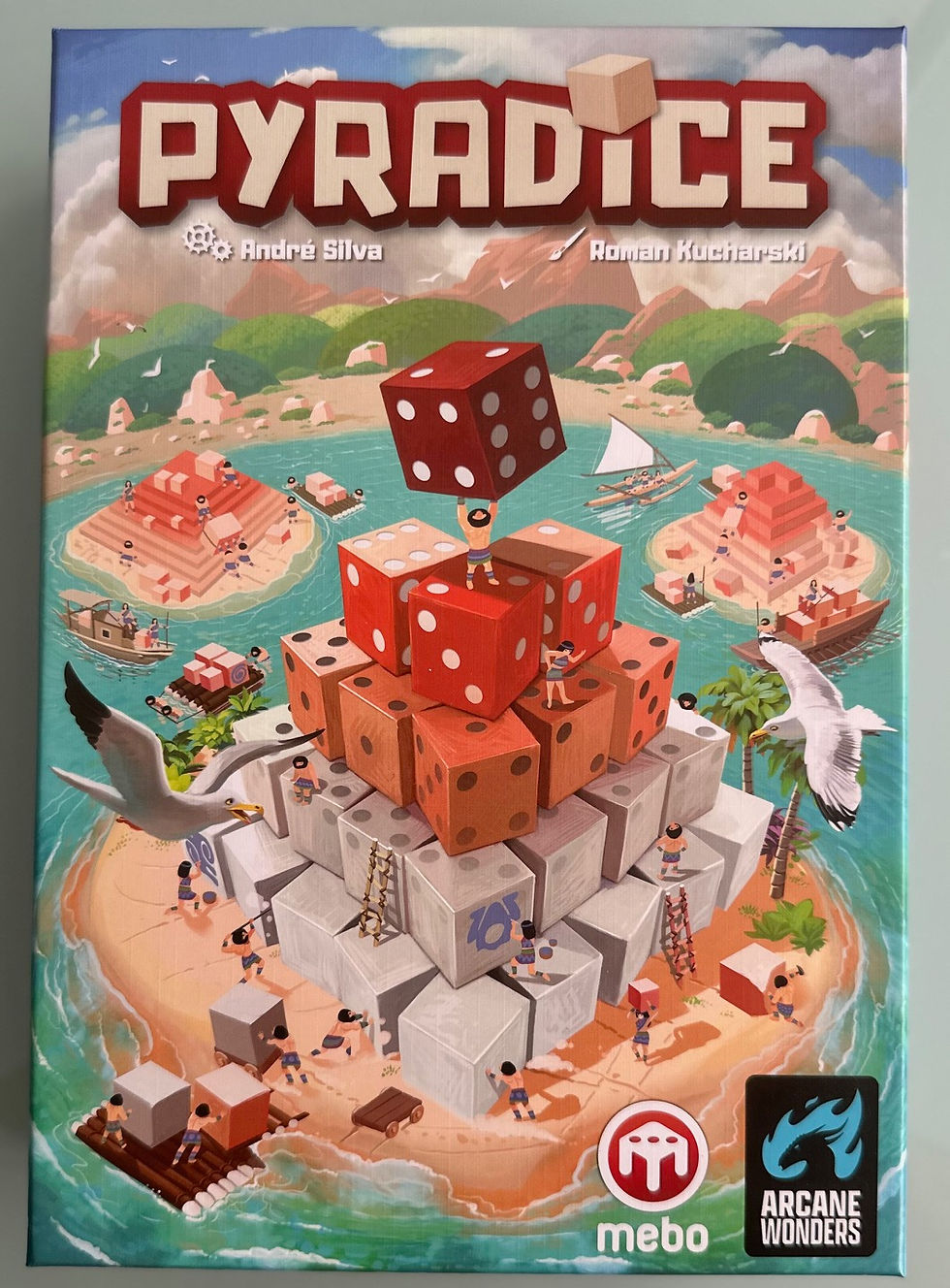The Adventures of Robin Hood
- Board's Eye View

- Mar 18, 2022
- 4 min read
Every so often a game comes along that stands apart for its sheer novelty. Michael Menzel’s Adventures of Robin Hood is just such a game. As you play the game’s successive scenarios, it tells the story of Robin Hood through its branching paths.
The Adventures of Robin Hood is a fully cooperative family-level game for 2-4 players. When you open up the box, the first thing that strikes you is a notice on the front of the rulebook that tells you that you don’t need to read it. And, no, this isn’t another game that just refers you to a ‘how to play’ video. This is a game where there is literally no pre-play rules overhead, other than the very basic explanation of how characters move. Several designers have toyed with ideas for games that you can learn as you play – perhaps most notably Friedemann Friese. Previous such attempts have had mixed success but this game truly nails it. This makes it an ideal family game and a gateway game that can be broken out to introduce non-gamers to the genre.

The playing board is jigsawed together from eight 26 x 26 cm boards. When assembled this portrays Sherwood Forest, the Sheriff of Nottingham’s Castle and a village. Some areas are in light and some in shadow, which you’ll learn is important for determining whether or not the Sheriff’s guards might capture you. There is no grid or layout of routes to govern movement. Instead, for each of the four player characters (Robin Hood, Maid Marion, Little John and Will Scarlett) you have two meeples and three measures. To move, you simply place any or all of your measures from the meeple on the board and the second meeple at the end, and that dictates the distance you can move on your turn. You can’t move through ‘obstacles’ (for example, buildings) so you will need to appropriately zigzag your movement pieces around them.
You’ll also note on the board that it has more than 200 numbered tiles embedded in it. This novel use of a dual-layer board is another of the standout features of The Adventures of Robin Hood. As you progress through the game, characters will be directed to visit particular numbered locations but you’ll also be on the lookout for ‘?’ icons on the board as they indicate locations or people that a player can interact with. In some cases, the interaction will give your character an item that will help the players.
The unfolding story comes within a hardback book. Starting with the introductory scenario, this gradually introduces the players to the workings of the game, with new aspects of play (rules) drip fed incrementally. As you’d expect, the introductory scenario is quite simple, but it introduces players to the randomised turn order (drawing coloured discs from a bag) and the bag building which determines combat with the Sheriff’s guards. It also introduces the game timer which players will be up against…
Whenever the Sheriff of Nottingham’s disc is drawn from the bag it loses the players some morale and removes a timer token, hastening the game end. The Sheriff’s disc also causes violet cubes to be added to the bag. Players need to complete the scenario objective before the time expires but they get to add a white cube to the bag whenever a character doesn’t use their longest movement piece. Since you resolve combat with the guards by drawing cubes from the bag, and you need to draw a white cube to win, players need to get the balance right between speed/length of movement and upping their bag building odds…
Tho’ there are just 10 scenarios in The Adventures of Robin Hood, all but the introductory scenario are designed so they can be played at least twice. The game can also be reset for replay at a tougher difficulty level; so there’s plenty of replay value in this beautifully produced game. And tho’ we’d recommend the game as a cooperative experience, you can attempt most of the scenarios solitaire.
Kosmos has put together a great package here, so it’s no surprise that The Adventures of Robin Hood is already a contender for this year’s coveted Spiel des Jahres award. Michael Menzel hasn’t just designed the game; he’s also the man behind this game’s fabulous artwork. But we’d like to give a shout out too to Nicky Thomas-Davies and Pamela Evans for doing such a great job with the English translation of this game from its original German. The hardback book, which is at the core of this game, is always crystal clear and its storytelling is immersive. Older players may get a tinge of déjà vu because the branching text and requisite flipping to numbered pages are reminiscent of the Fighting Fantasy game books popularised in the 1980s by Steve Jackson and Ian Livingstone, and the Tunnels & Trolls solitaire RPG game books that preceded them. Consider that a bonus.




